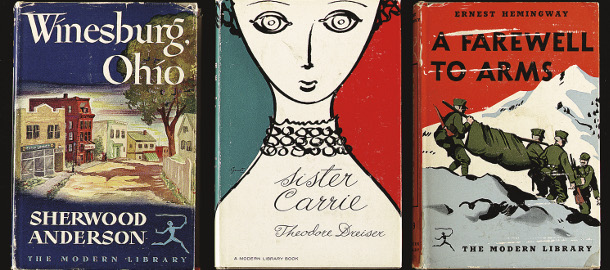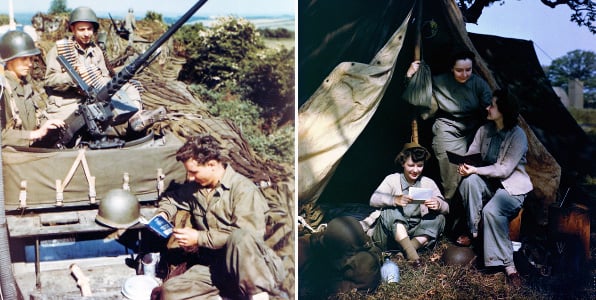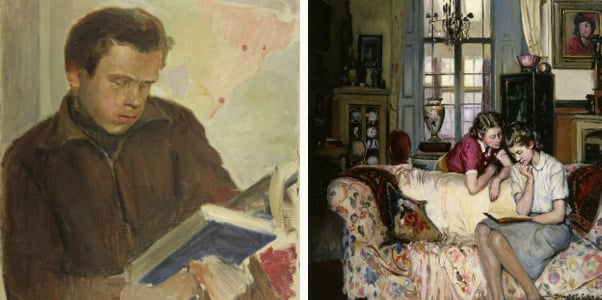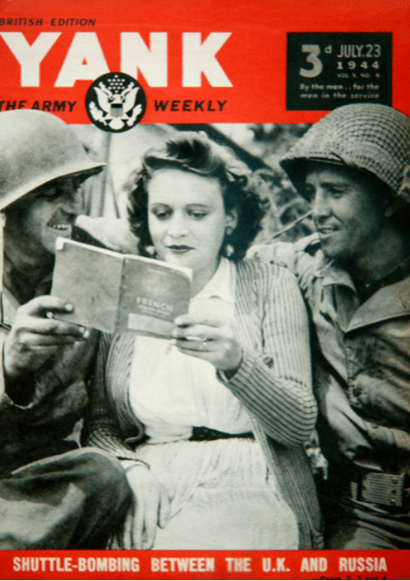
World War II: How American Publishers Created a Nation of Readers
Throughout World War II, The Council on books in Wartime distributed almost 123 million paperback editions of classic literary titles to American troops overseas. Battling against the disapproval of the American publishing houses, within a couple of years, the Council had inspired thousands with the thrill of a good book.

Left: United States Army soldiers atop an M4 half-track armoured personnel carrier, May 1944 / © Galerie Bilderwelt
Right: Three women of the Women’s Army Corps 1944 / © Galerie Bilderwelt
Cheap mysteries to literary classics
Before the war, books were a luxury item and scarcely available to the public, with beautifully bound hard cover books selling for about $2 a piece. Reading was not necessarily a pass time of the American people, however, throughout the 1920s and 30s, the trend for penny reads, cheap mysteries, comics and westerns available at newsstands, was a growing business.
In 1939, determined to reach a wider market, publishing houses such as Pocketbooks and Penguin books began to offer cheap paperbound reprints of some of their classic titles. By 1943, over 38 million paperbound Pocketbooks were being printed for sale at general stores across the country.

Left: Boy Reading a Book / Konstantin Lekomtsev / Gamborg Collection
Right: An Interesting Story / Denys George Wells / Photo © Christie’s Images
Books for the troops
In 1943, The Council on books in Wartime introduced a brave initiative. Attempting to “boost the war effort with books”, they worked with reluctant publishers to cheaply print and ship their top reads to troops deployed abroad. Producing a box of about 40 titles, such as Tristram Shandy and The Great Gatsby, for every 150 soldiers and sailors, the army “devoured” the books, and the Council was struggling to meet demands.
Soon enough, The Council on books in Wartime were keeping abreast with the reading trends of civilians, printing current bestsellers including beloved novels such as A Tree Grows in Brooklyn. The soldiers were able to keep the books as their own, sharing the stories aloud, and swapping them with friends, “instilling in them… a taste for good reading that will surely persist come victory” a military private was quoted.

French girl helps Americans with language, front cover of ‘Yank’ magazine, British edition, July 1944 (colour litho), American School, (20th century) / Private Collection / Peter Newark Military Pictures
A nation of readers
By the end of the war, publishers were widely distributing these cheap reads around the country, and in 1950, over 200 million copies of 642 paperback titles, more than enough for everyone in the country, were produced, and a nation of avid readers was born.
For the original article, please refer to Publishers Gave Away 122,951,031 Books During World War II by Yoni Appelbaum at theAtlantic.com.
Find out more
Read more about culture and affairs of World War II in The 70th anniversary of D-Day and Stolen! The Biggest Art Heists Of All Time (Part 1)
Donate your books to troops overseas with charities like Operation Paperback and Books For Soldiers.
All images in this article are sourced from bridgemanimages.com. Contact the Bridgeman sales team an nysales@bridgemanimages.com for more information regarding licensing, reproduction and copyright.
